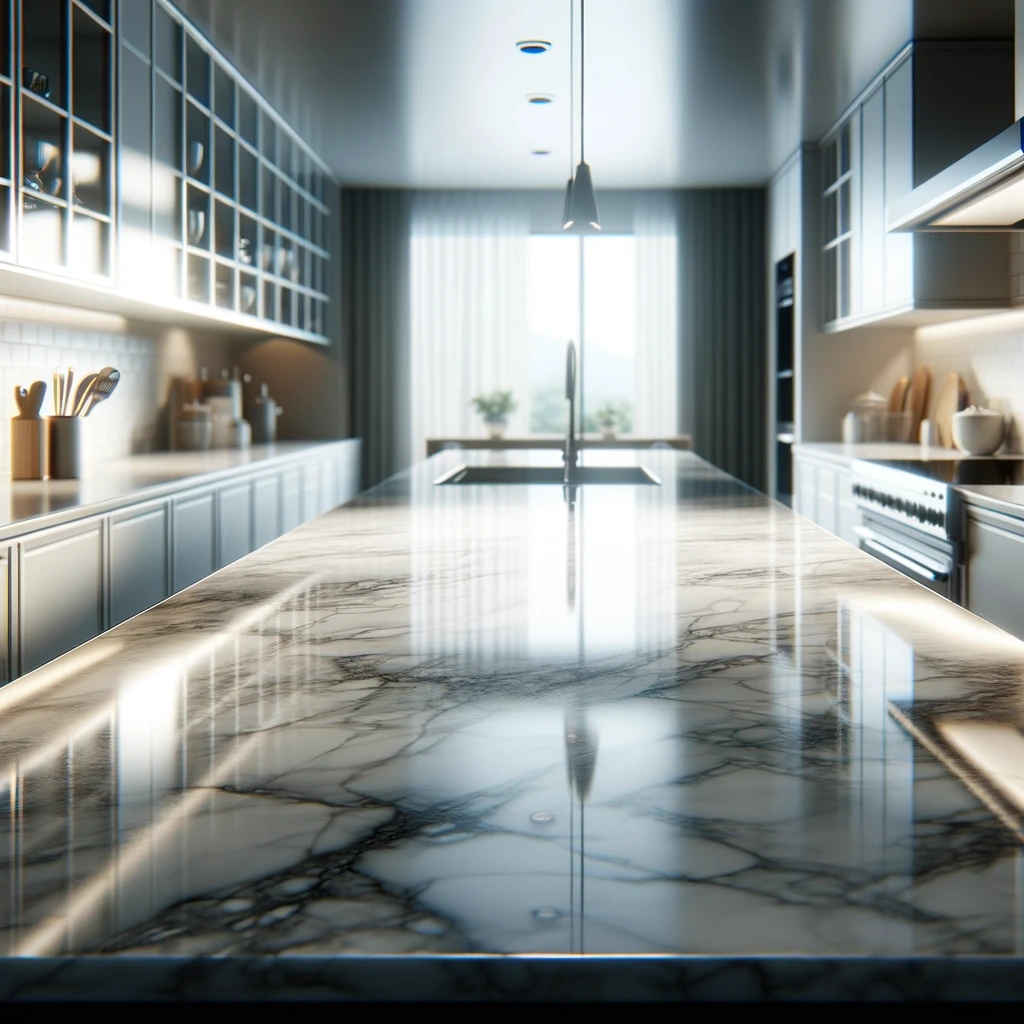How to Easy Tackle Stubborn Stains on Countertops in 4 Steps
Tackling Stubborn Stains on Countertops doesn’t have to feel like a daunting task. Whether you’re dealing with a splash of coffee or a splash of sauce, there’s a simple, three-step approach that can help you get your counters shining again in no time. So, grab your cleaning supplies, and let’s dive into how you can make those stubborn stains a thing of the past! Identify Your Countertop Material Jumping into cleaning without knowing what your countertop is made of is like using soap before knowing if it’s for your hands, dishes, or clothes. Each one has its own needs, and countertops are no different. You see, materials like granite, marble, quartz, or laminate don’t just differ in looks but in their resilience and reaction to cleaners. Take marble, for instance; it’s as porous as a sponge in a way, soaking up liquids and potentially getting stained or damaged if you use something as common as vinegar or lemon juice for cleaning. And then there’s granite, tough and sturdy, yet it can still suffer if you treat it with harsh chemicals. Quartz, on the other hand, is like the superhero of countertops, resistant to most stains and damages, but even superheroes have their kryptonite — in quartz’s case, high pH cleaners can be its downfall. Laminate is like the easy-going friend, less fussy and able to handle a variety of cleaners, but still not a fan of abrasive scrubs that can leave it looking dull and scratched. So, knowing what your countertop calls home is the first step in making sure you’re not accidentally turning your cleaning spree into a renovation project. By identifying the material of your countertop, you equip yourself with the knowledge to select the right cleaning agents — ones that will treat your surfaces with the care they deserve, ensuring they stay looking as good as new. Prepare Your Cleaning Solution The mix you need depends on the type of countertop you’re dealing with. It’s not just about grabbing the nearest spray bottle; it’s about crafting a solution that speaks directly to the stains without offending the delicate balance of your countertop’s material. For those sporting granite or marble countertops, think of creating a gentle, yet effective, potion. A simple concoction of mild dish soap mixed with warm water can work wonders, creating a sudsy solution that lifts stains without causing drama. But when the going gets tough, and you’re staring down a stubborn stain refusing to leave, turning to a paste of baking soda mixed with water can be your gentle warrior. Apply it with care, and watch as it works its magic, coaxing the stain out without any harsh words. Quartz countertops, with their robust nature, still appreciate a soft touch. A spray of glass cleaner or a dab of dish soap mixed into water can be the perfect remedy for everyday spills. Yet, when faced with a stain that laughs in the face of regular cleaners, a gentle degreaser can step in. Used sparingly, it’s like having a secret weapon that targets the grime without undermining the quartz’s integrity. Laminate counters, with their versatile and forgiving nature, still require a thoughtful approach. A mix of vinegar and water, or for those more persistent stains, baking soda dissolved in water, can act as a mild, effective cleaner. This solution respects the laminate’s boundaries, cleaning without causing harm. When applying your chosen potion, imagine you’re painting with the softest brush, not scrubbing with a scouring pad. Using a soft cloth or sponge, embrace a gentle, circular motion, allowing the cleaner to do its job without introducing scratches to the scene. Rinse, Dry, and Repeat if Necessary After you’ve put your cleaning solution to work and given that stubborn stain a gentle, yet firm talking to, it’s time to wash away any remnants of your cleaning campaign. Rinsing the area thoroughly with clean water is like the cool down after a workout, ensuring no sticky, soapy, or abrasive residues are left behind to tarnish your victory. This step is about respect for the surface you’ve just painstakingly cleaned, ensuring it’s left in pristine condition, ready to face the world—or at least your kitchen’s daily adventures—once more. Drying off your countertop with a soft towel isn’t just about avoiding water marks; it’s a gesture of care, protecting your surface from the potential harm of lingering moisture. Think of it as tucking your countertop in after a long day, ensuring it rests spotless, dry, and ready to shine brightly under your kitchen lights. However, much like life’s more persistent lessons, some stains don’t get the message the first time around. If after your initial efforts the stain stubbornly clings on, refusing to be forgotten, it’s time for a repeat performance. Retrace your steps with the cleaning solution, applying it with the same care and attention as before. This isn’t defeat; it’s determination. Some stains are simply more tenacious, requiring patience and persistence to fully erase their presence. This repeated process isn’t about brute force; it’s about understanding that some things take time. With each application, rinse, and dry cycle, you’re not just working to remove a stain; you’re caring for your home, ensuring that every inch of it reflects the care and attention you pour into it. Sometimes, it’s these repeated efforts, this willingness to try and try again, that make all the difference, leaving you with a countertop that’s not only clean but truly gleams with the pride of well-fought victory. Leverage the Power of Natural Light and Inspection Once you’ve navigated through identifying your countertop’s material, concocted the perfect cleaning solution, and meticulously rinsed and dried the surface, there’s an additional step that can elevate your cleaning game to new heights. It’s time to harness the illuminating power of natural light and a keen eye for inspection. This step is all about ensuring not a single spot or streak has been left behind, turning your countertop not just into a clean surface, but a
How to Easy Tackle Stubborn Stains on Countertops in 4 Steps Read More »

